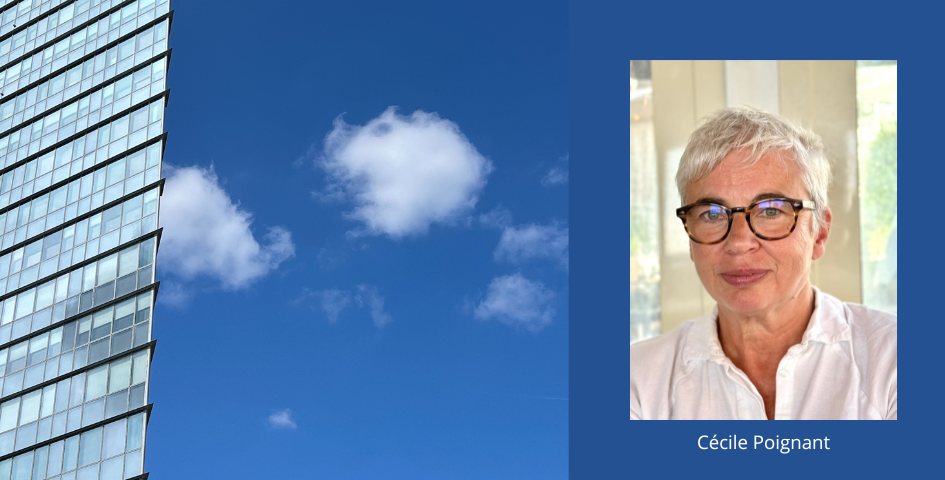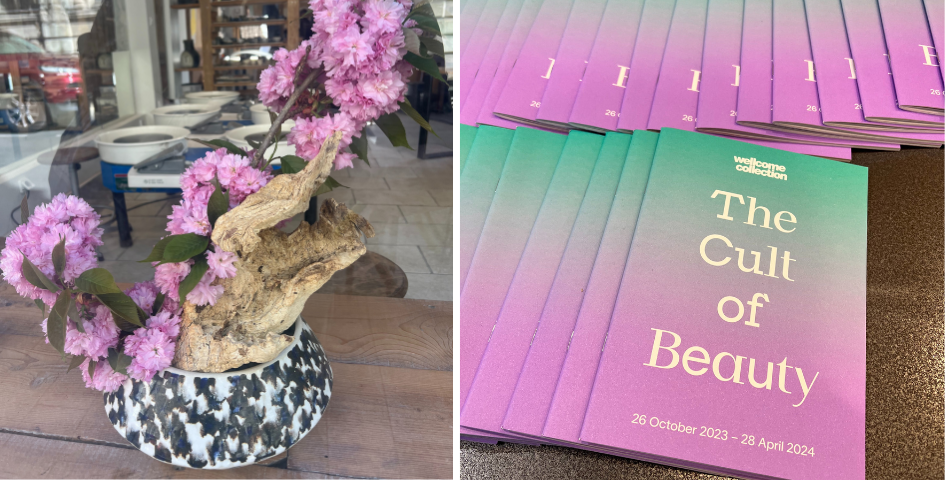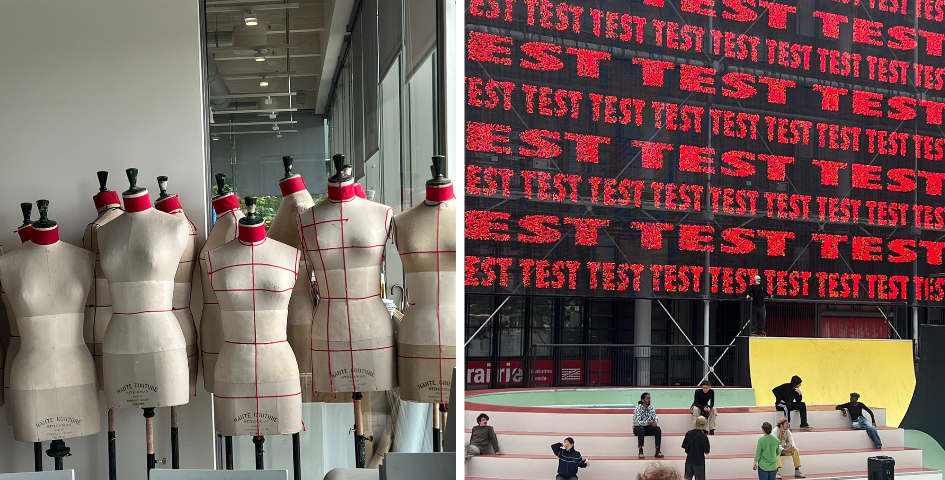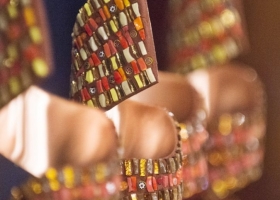
The Best ofIntima & Swim Edit
19 February 2025
How to transform the instability of our time into a source of inspiration and develop a creative mindset through methods accessible to all. Cécile Poignant, expert in strategic foresight, shows us the way.

What is creativity? This word is used everywhere these days. There's a widespread feeling that everyone and everything needs to be creative, including companies. We pretty much understand what we're talking about.
We think of creative geniuses like Steve Jobs, Frida Kahlo, Picasso, Marie Curie, or Leonardo da Vinci. We often recall works of art that sparked scandal in their time or groundbreaking inventions that reshaped our relationship with the world, yet creativity remains difficult to define with precision. It’s a complex concept that traces back to the second half of the 20th century and has since become essential to the continuous creation of new objects, products, and services.
In many ways, creativity can be seen as a prevailing trend today. For me, trends reflect the zeitgeist—the collective ideas, beliefs, and emotions that define a particular era. The growing emphasis on creativity seems to be a response to the state of the world. In our unstable, restless, and ever-changing environment, creativity stands out as a vital tool. The ability to see the world with fresh eyes and generate new ideas has become an essential skill. In fact, the World Economic Forum recognizes creativity as one of the four key skills necessary for navigating our times.
More than ever, creativity needs to be grounded in problem-solving; it must help develop sustainable thinking and positive initiatives for the future. We need to rethink the system globally and find tangible solutions. How can we be creative under these challenging circumstances? Can we learn to generate ideas, strengthen our creative brains, and cultivate our childlike spirit? The answer is yes! Contrary to popular belief, creative thinking is not an innate skill reserved for a privileged few. It can be cultivated and nurtured by applying structured methods.
Let’s start with a three-step creative process:
Collect information: Accumulate inspirational elements. Use curiosity notebooks to jot down ideas or create a "treasure chest" where you keep interesting materials. Collect images —postcards, packaging, magazines. Collect samples of materials and colors. Capture intriguing patterns you come across.
Filter and keep what's relevant: Once you have a good collection of materials, images, and colors, sort them. Keep what resonates most with your creative vision. This stage clarifies ideas and lays the foundations for the creative process.
Associate and combine: This is where the magic happens. Use idea association to combine seemingly unrelated concepts. One fundamental technique is the art of remixing. This approach is based on the idea that nothing is entirely original but rather a combination of what already exists. In fashion, this could mean mixing styles from different eras to create something new.

To stimulate a creative brain, curiosity is essential. There are a few rules you can use to cultivate it:
Investigate: Be constantly on the lookout for new information and experiences. Visit museums, take part in inspiring lectures.
The power of "why?": Question everything around you to deepen your understanding of the world. Why are some patterns more attractive than others?
Learning to see: Pay attention to details that others overlook. Look for small things in nature, architecture, and even on the street.
Be curious all the time: Never miss an opportunity to learn. Read books, watch documentaries, and talk to people from different backgrounds.
What if?: Let your imagination run wild with hypothetical questions. "What if clothes could change color depending on the weather?"
Embrace serendipity: Sometimes the best ideas come by accident.
Daily practice: Make curiosity an everyday habit. Set aside a little time each day to explore something new.
A certain state of mind is required for creativity to flourish. Here's a non-exhaustive list of what encourages creativity: freedom, risk-taking, confidence, assertiveness, empathy, altruism, open-mindedness, dreaming, and patience. For example, a work environment where ideas are welcomed without judgment encourages creativity. In contrast, what can block it: conformism, routine, pessimism, stress, fatigue, perfectionism, fear of failure, and poor excuses such as "I don’t have time," "it’s too complicated," "I’m not a creative person….

I love making lists for a bit of everything, and it also works for nurturing your creativity. Here are two list exercises:
List of 50: A quick exercise that helps latent ideas to emerge by making maximum use of memory. List 50 ideas in three minutes, or 50 things you saw on your way to work this morning in three minutes. Time pressure forces us to be more instinctive in our responses.
List of 3: Identify three things, places, people, or activities to which you'd like to pay more attention to feed your creativity. For example, spend more time visiting art galleries, meditating, or learning about eco-design.
To keep creativity flourishing, it's essential to retain a childlike spirit. Play and imagination are very powerful tools. Create environments where you can experiment without fear of judgment. Organize playful brainstorming sessions where all ideas, especially the wildest, are welcome. Practice forced connection exercises: Combine different objects, styles, or concepts to see what comes up. Choose four words at random from a book and try to imagine an object using them. Use reverse questioning: imagine how to achieve the opposite of a desired result to generate new ideas. If your aim is to create a minimalist outfit, imagine what a maximalist outfit would look like and find inspiration in this exercise.
Open-mindedness is essential to creativity
How can you imagine creative products? One of the most effective ways of stimulating creativity is to draw inspiration from very different worlds and fields of expertise. Some companies are already doing it by combining biology, design, and art. Nature is a vast R&D center with millions of years of trial and error resulting in ingenious solutions.Velcro, created in the 1940s by a Swiss engineer, is a good example: he was inspired by the hooked seed pods of the burdock plant, which he examined under a microscope.
Even the most talented designers have creative blocks. Here are a few techniques for overcoming them:
Chasing butterflies: Change your activity to let your ideas develop in the background. Go for a walk, sit on a terrace, or do some yoga.
Tidy up your bookshelf: Organize your workspace to create an environment conducive to creativity. Or look for inspiration in your books.
Lower the bar: Have simple goals to avoid the stress of perfectionism. Sketch out ideas without worrying too much.
Start anywhere: Get started without waiting for all the conditions to be perfect. Sometimes just starting something can unlock the creative process.
Prototype: Create mock-ups or quick trials to test your ideas.
Creativity is a mindset; on this journey, every little step counts. Gathering information, combining ideas, and constantly questioning are essential practices. Dare to take risks, and above all, have fun!
Copyright 2025. All right reserved - Terms








